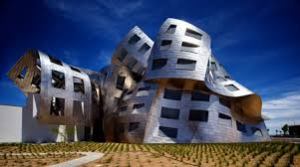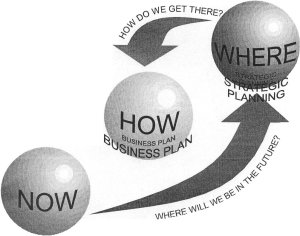The other day, I penned a small diatribe against utopians who — having power at their disposal — severely damaged our world. The essay echoed around the internet and found some surprising opposition among peer-to-peer systems proponents. When my riposte met with silence, I decided to piggyback onto that thread here.
Perhaps the rant came off my keyboard too hastily: I was fuming against all those people who, certain of their “vision” and having obtained access to the corridors of power, then proceed to impose it on us all, regardless of objections, regardless of feedback, regardless, indeed, of the reality they *actually* create.
I am all for literary utopias where speculation runs rampant and new vistas open up to human imagination. What I am against is taking that speculation and trying to hoist it upon the hapless humans that happen to be within the utopian’s power orbit. Often this takes the form of policies and laws forced upon people to change their behavior. It’s been called “social engineering” in some circles, and aptly so, since it essentially pushes and manipulates people in the direction the utopian wants them to go, and through top-down methods no less. That, my friends, is not autonomy. That’s not freedom, nor is it respect. That’s not the right algorithm for getting there.
How, then, do you grow a future that works? Christopher Alexander happens to have a few things to say about it in his Process of Creating Life.
The essence of successful unfolding is that form develops step by step, and that the building as a whole then emerges, coherent, organized. The success if this process depends, always, on sequence. A building design can unfold successfully only when its features “crystallize out” in a proper order.
Instead of using plans, design, and so on, I shall argue that we must instead use generative processes. Generative processes tell us what to do, what actions to take, step by step, to make buildings and building designs unfold beautifully, rather than detailed drawings which tell us what the end-result is supposed to be.
The step-by-step approach works. The all-or-nothing approach does not work. This is the secret of biological evolution. During the course of evolution, the adaptation of the thousands and millions of variables that must occur to make one successful organism happens step-by-step, essentially one gene at a time. That is what makes evolution possible. It would be impossible for nature to “design” a system as complex as any organism all at once.
What steps do you take, in what order? The most basic instruction I can give you as a guide for a living process, is that you move with certainty. That means, you take small steps, one at a time, deciding only what you know. You try never to take a step which is a guess or a “why don’t we try this?” Large scale trial-and-error, shots in the dark, simply do not work. Rather, you move by slow, small decisions, deciding one thing, getting sure about it, and then moving on.
The crux of every design process lies in finding the generative sequence for that design, and making sure that sequence is the right one for the job.
Generative sequences emerge from the doing. When I discovered them in Alexander’s writing, I thought he was referring to some template to follow, because he mentioned a song some Oceanic culture uses to pass on the sequence for building a canoe. It begins, “First, find the right tree,” and ends, “Carve the prow in the shape of a woman.”
Not so. Generative sequences emerge from the doing, when we begin where we are, and move organically from there. Sometimes, the generative sequence that emerges is of common use, when, for example, people often make canoes. Such a generative code (which might be turned into a song or a rhyme) becomes a cultural treasure, worth passing on to successive generations. Creating a sound agricultural terrace is another example. Or placing the windows in a room being built. But in unique or novel situations, the sequence itself emerges step by step.
Here’s the actual emergence of a generative sequence for household composting. When I came to the house where I lived for a number of years, I of course had an elaborate vision in my head of a large square compost heap, preferably made of nice wooden slats that were removable on one side. You’ve seen the pictures. So I chose a spot for it, and tried to figure out if I could build it. It seemed beyond me at that time. I considered using cinder blocks, but that would have made it too big and too ugly. Buying a nice wooden structure would have meant spending a lot of money ordering by mail, since local gardening shops had nothing like it. I was reluctant to turn this project into a shopping expedition. I also developed doubts about the location of the heap. I simply began to throw weeds and rotting refuse onto the spot. But it turned out too out of the way. At that point, I more or less gave up. Much later, I hit upon a generative sequence. It went like this:
- Need (“felt vision”): to stop throwing food bits into the garbage; to return them to the cycle of life. To walk my walk.
- So. If I don’t throw them away, where do I put them (as I am holding the potato peels)?
- Ah. Grab a plastic container, place by the sink, put peels in it.
- Next morning… ok, now, what do I do with these rotting peels? I have a big old plastic flower pot way back in the garden where I throw a bit of grass refuse and weeds; why don’t I throw the peels there? Done.
- Ick. I don’t like going way back there in bad weather. I need a place where I can empty the container if it snows, if I am barefoot or wearing only undies. I grab the flower pot and move it by the back door. Voila!
- Oops, we have a problem. I keep tossing the bits in the garbage anyway… keep forgetting. I need a way to change a lifelong habit. How about making a big squiggle on the side of the garbage bin with a sharpie pen? Yes, it works.
- Spring comes, and the pot is beginning to stink. What now? Toss some sawdust on it? Time to experiment.
- A bit of soil and warmer temps cure the problem.
And so it went. I did not spend a penny on the system. And since I evolved it stepwise from need to need, it is not surprising that it actually served my needs! One of these days, I will spring for a nice porcelain container with a lid to place by the sink. Now I know exactly the size and shape I need. And by the way, that spot I had originally picked for the heap? It would have been completely wrong on several counts. If I had used a plan, I would only have found out after implementation. Too late.
The emergence of new structures in nature is brought about, always, by a sequence of transformations which act on the whole, and in which each step emerges as a discernible and continuous result from the immediately preceding whole. New form comes into being. Morphogenesis occurs. New form that is, in almost every case, unpredictable from the initial state, appears smoothly via a sequence of tiny continuous changes. The sequences are not merely smooth. We have a sequence in which new structure grows organically, holistically, from the structure which is there already. One whole gives rise to another.











